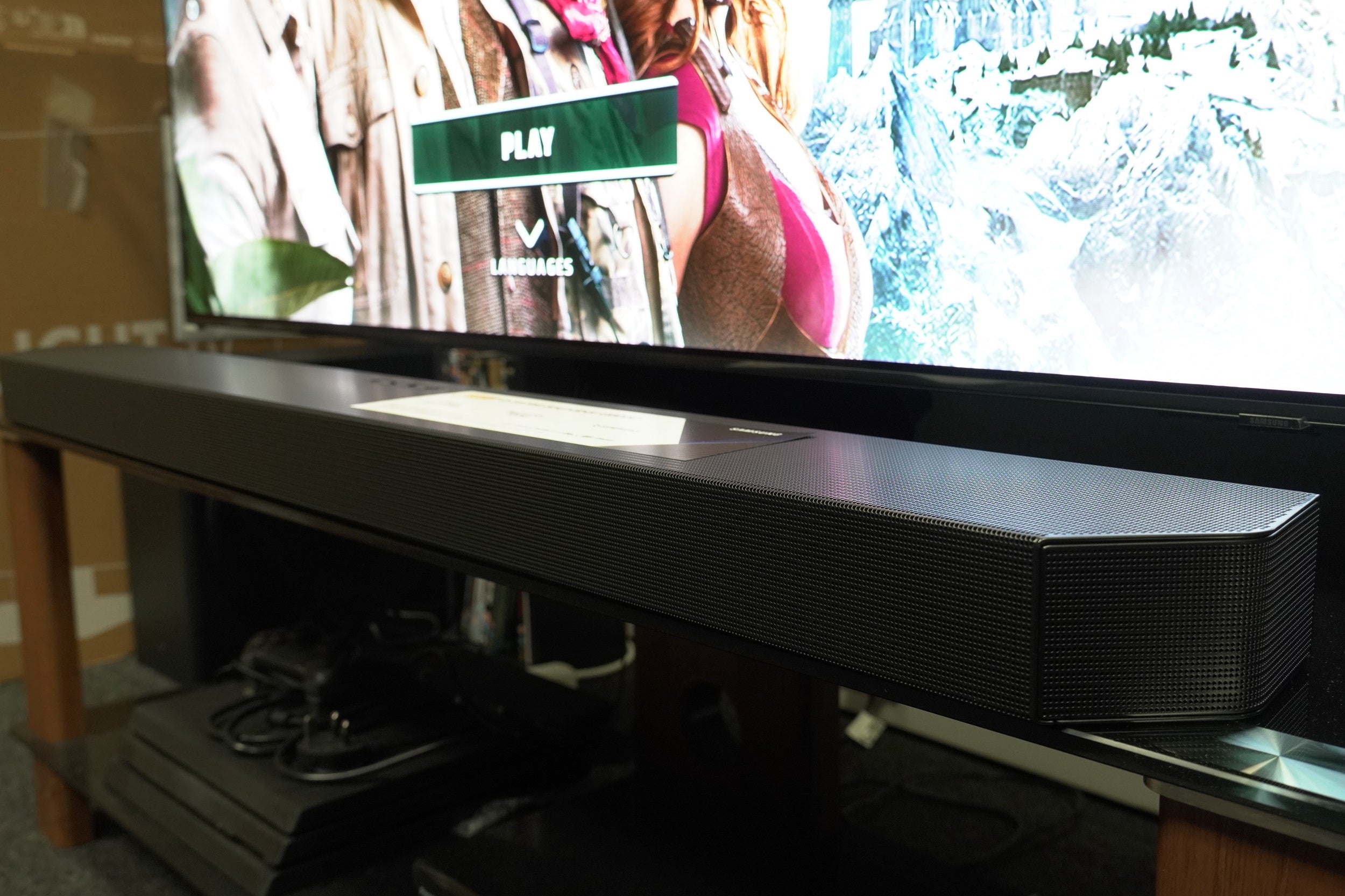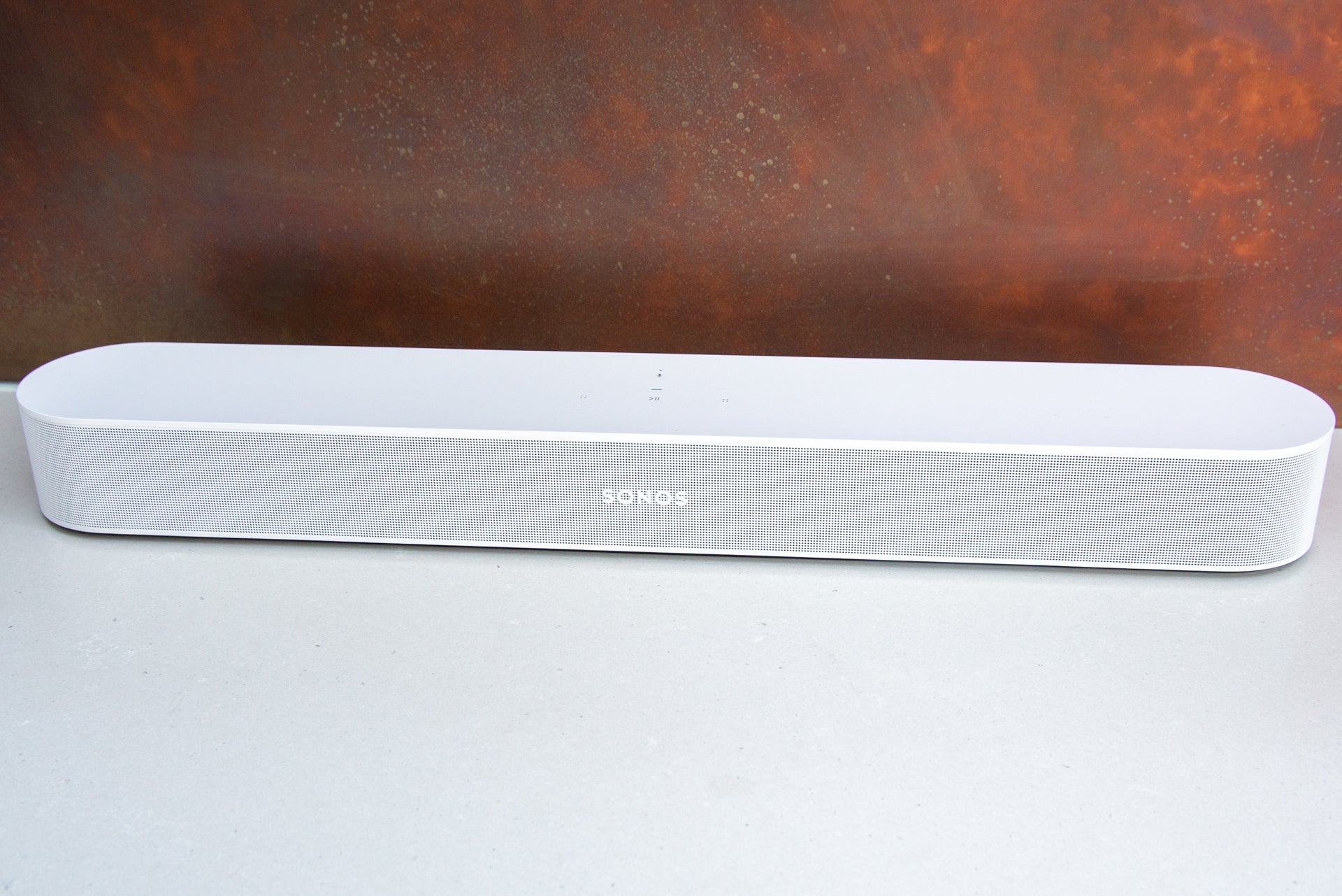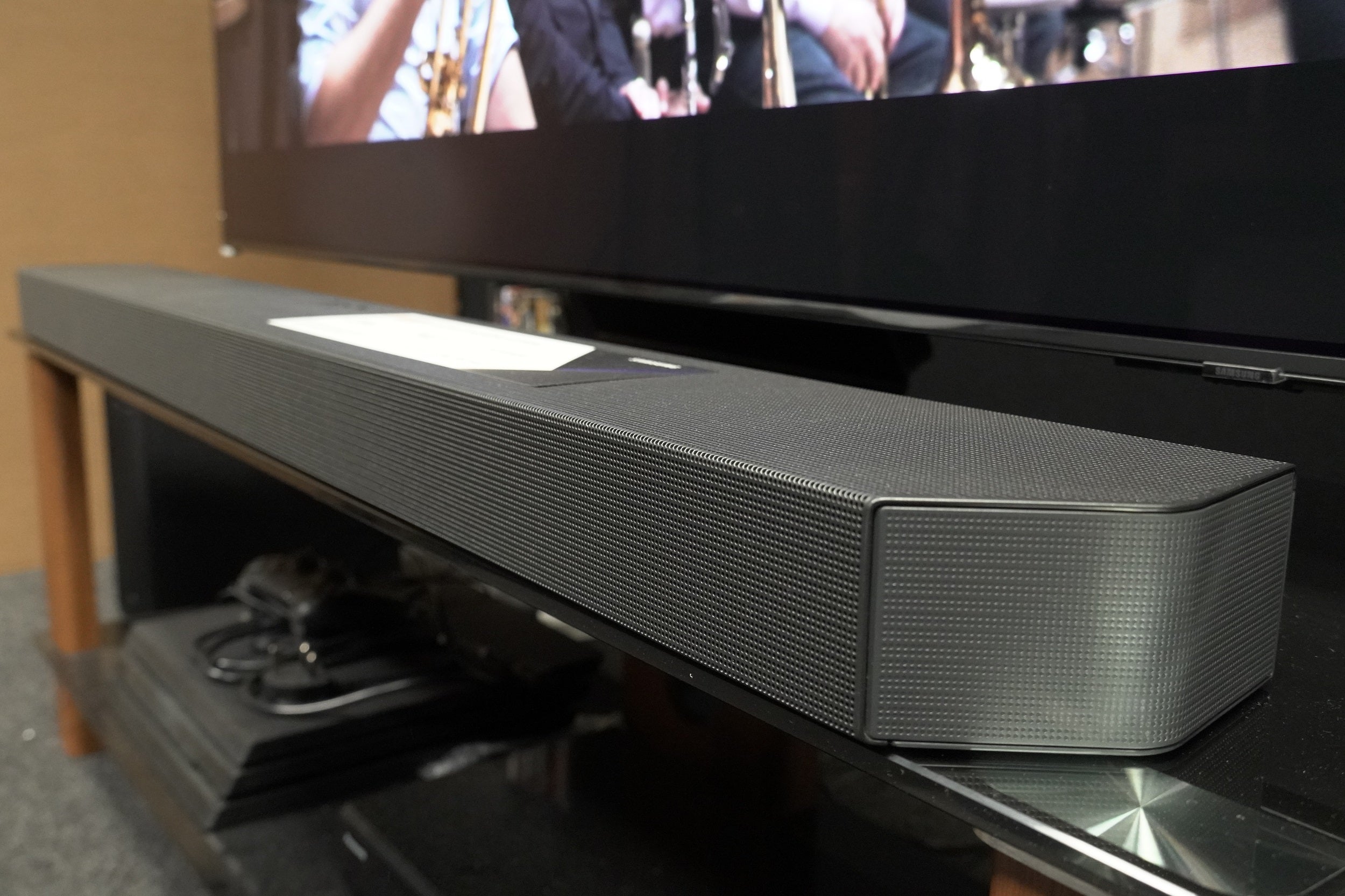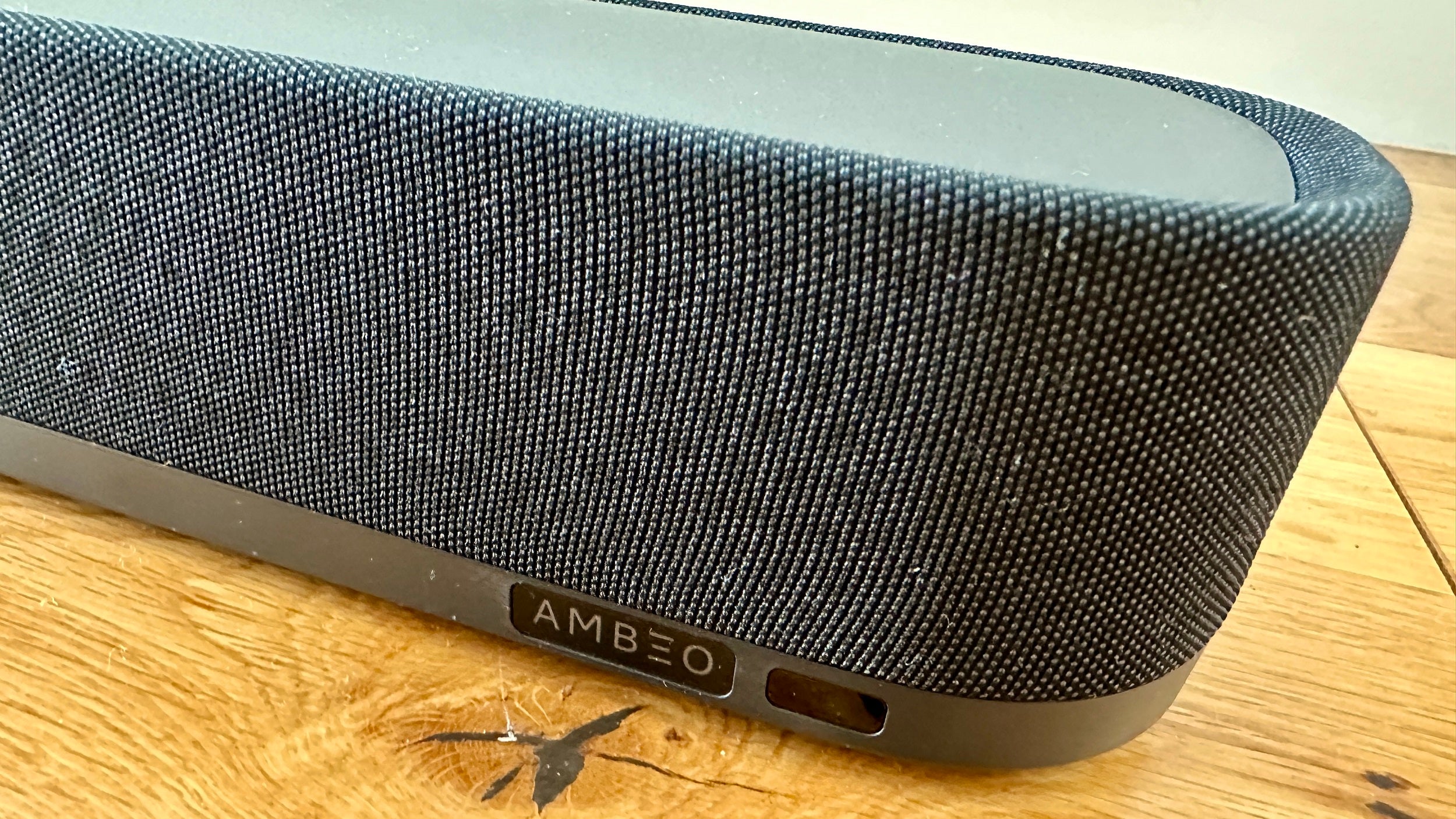Yamaha SR-C30A Review
A great way to affordably improve your TV's audio performance
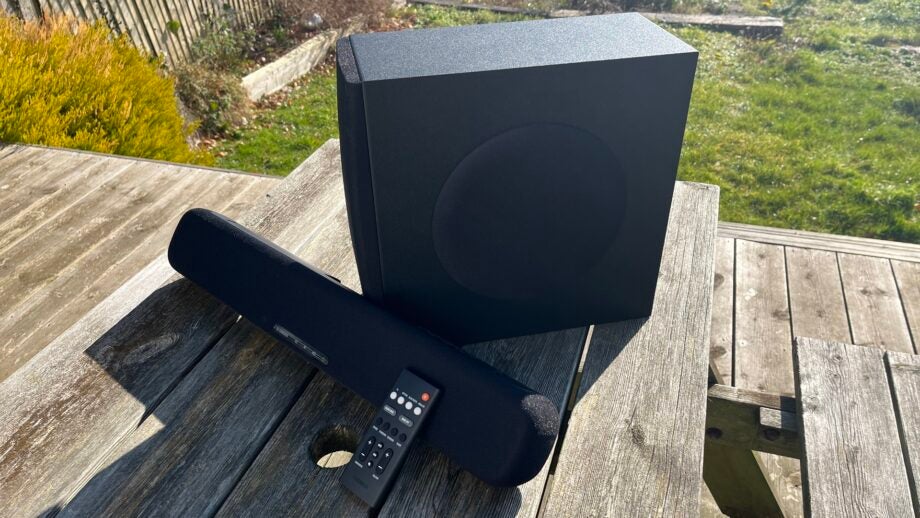

Verdict
The titchy SR-C30A is great at making your terrible TV speakers sound much better. If the rather fractured relationship between the soundbar and the subwoofer could be counselled, it would be approaching ‘ideal’.
Pros
- Direct, detailed and surprisingly sturdy sound
- As compact and discreet as they come
- Extensive control options
Cons
- Soundbar and subwoofer could be on better terms
- Not the most expansive listen
- Capable (though admittedly bigger) rivals
Key Features
- Adaptive Low VolumeMaintains high sound quality at lower volumes
- Clear Voice modeMakes dialogue more audible
Introduction
Yamaha, it’s safe to say, has plenty of previous where soundbars are concerned – in fact, you could argue that the company originated the whole concept in the first place.
And it’s true to say Yamaha knows exactly what’s what when it comes to usefully compact soundbars, too – its dinky little SR-C20A is a brilliant combination of biggish sound from a little chassis at an equally little price.
So my hopes are high for the SR-C30A, no two ways about it. It takes the proven SR-C20A recipe and adds a wireless subwoofer for a bit of the cinematic rumble and thump we all value in our movie and/or gaming sound, without letting the asking price get out of hand. All it has to do is sound great, and it’s job done…
Availability
- UKRRP: £299
- USARRP: $279
- EuropeTBC
- CanadaTBC
- AustraliaRRP: AU$399
The Yamaha SR-C30A is on sale and in the UK it sells for a competitive £299. In America, it’s priced even more aggressively: it’s yours for $279. Australian customers, meanwhile, while have to fork out no more than AU$399 to secure one.
Soundbars at this sort of money aren’t especially thin on the ground – even soundbars with an accompanying subwoofer aren’t hard to come by. But a soundbar so small it can be used beneath the titchiest TV or gaming monitor, with a wireless sub thrown in? Those are harder to come by…
Design
- Compact dimensions
- Shelf- or wall-mount
It’s important to calibrate your expectations where the design and finish of such an affordable system is concerned – even if it wears a Yamaha badge. There’s absolutely nothing wrong with the way the SR-C30A is put together, and the materials from which it’s made are perfectly fit for purpose too… but luxury costs a fair bit more than this.
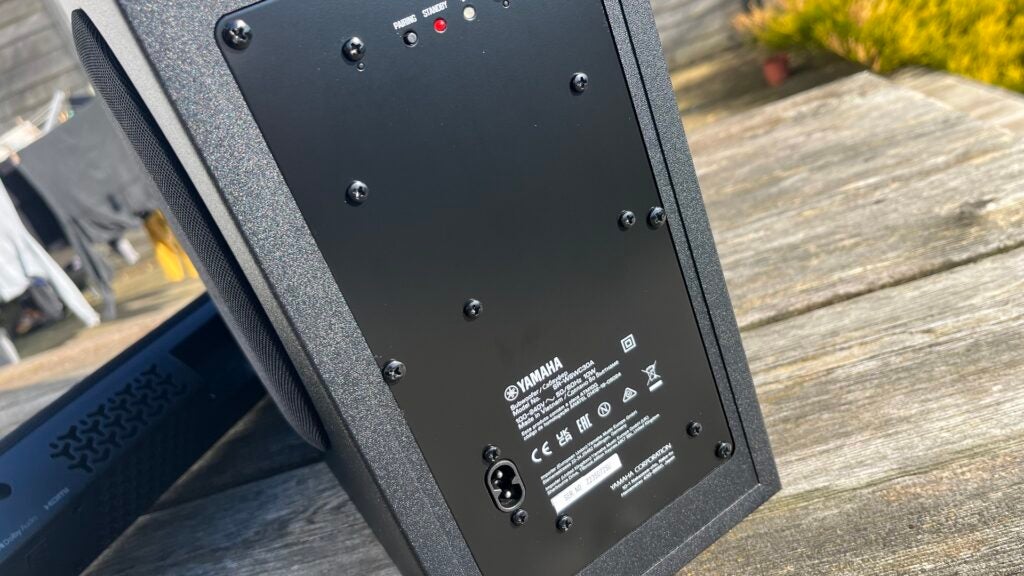
The wireless subwoofer is almost entirely chipboard, but it’s properly screwed together and smoothly finished. The front panel, which has a plastic-trimmed bass reflex port towards the bottom, is covered in acoustic cloth, and there’s more of that material covering the side-firing bass driver. At 335 x 160 x 364mm (HxWxD) it’s reasonably compact – and this, along with the wireless aspect of its specification, means it’s happy enough pretty much anywhere in your listening room. As long as it has access to mains power, of course.
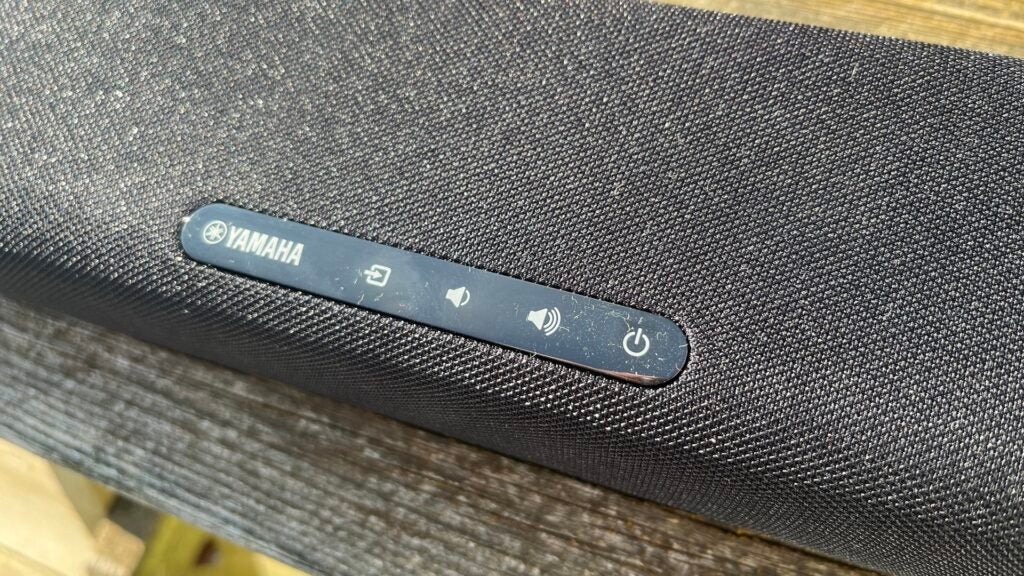
The soundbar itself, meanwhile, is a dinky 64 x 600 x 94mm (HxWxD) – which means it will sit happily beneath even the smallest TV without looking in any way imposing. At just 1.3kg it’s no trouble to move from one room to another, either – and thanks to some keyhole fixings on the rear panel, it can be wall-mounted almost as easily as it can sit on a shelf. It’s built from an ordinary (but perfectly serviceable) grade of plastic, and features more of the same acoustic cloth across the front and top surfaces. Tactile it isn’t, but it – like the subwoofer – is properly made and finished.
Features
- HDMI ARC, digital optical and Bluetooth 5.0 connections
- 90 watts of power
- Multiple control options
This is a 2.1-channel system, as both its size and its asking price probably makes clear – none of your fancy-pants spatial audio here. The SR-C30A is able to deal with pretty much any audio information that’s incoming – but what you’ll hear is a stereo-plus-subwoofer rendition of it.
The soundbar features a couple of 46mm full-range drivers, each in receipt of 20 watts of Class D power. The subwoofer, meanwhile, has a side-firing 130mm bass driver (with bass reflex reinforcement), which gets 50 watts. The connection between the two is wireless, and it happens automatically the moment both elements are powered up – and there’s a little pairing button on the back of the subwoofer in case it doesn’t.
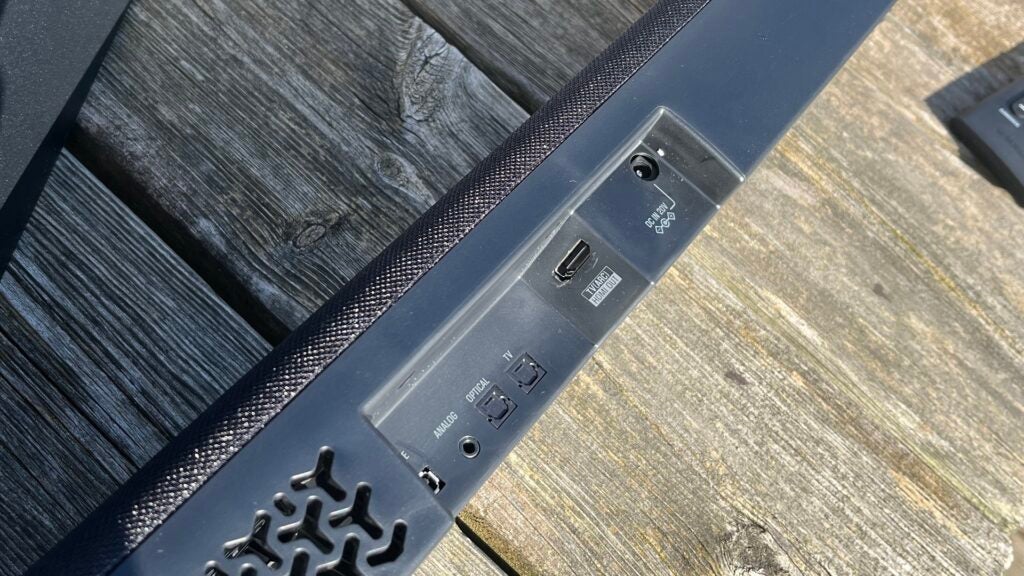
The back of the soundbar features all the physical inputs. There’s an HDMI ARC socket, a couple of digital optical inputs (one labelled optical, the other ‘TV’ in case you’re not using the HDMI input) and a 3.5mm analogue socket. There’s also a USB slot, but this is just for servicing purposes. Wireless connectivity is taken care of by Bluetooth 5.0, with SBC and AAC codec compatibility.
Control of the system can be achieved in one of several ways. There are a few touch-controls on the top of the soundbar itself (volume up/down, input selection and power on/off) – these are above a little row of LED tell-tales that let you know what’s what as regards input and volume level.
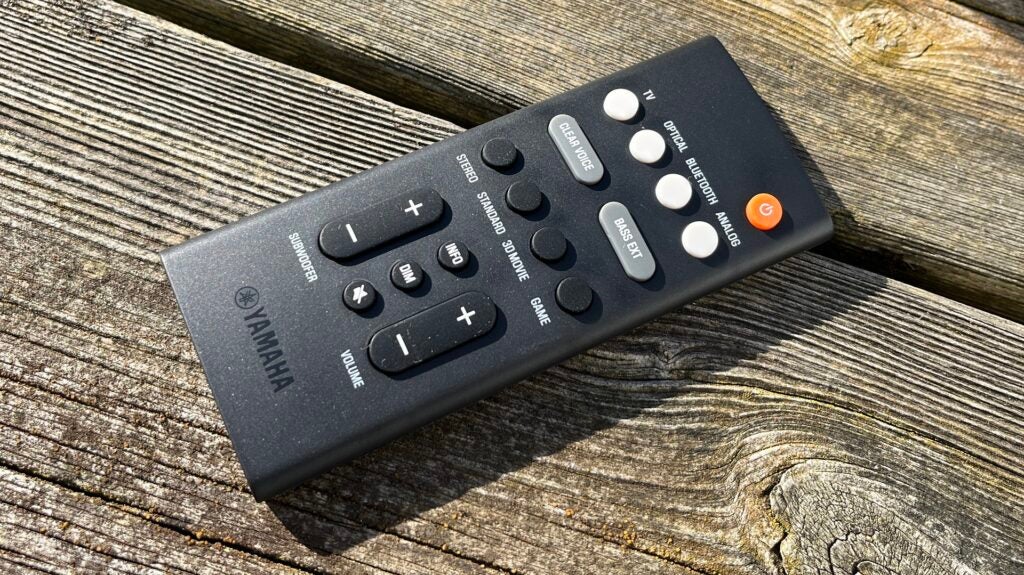
The Yamaha is also supplied with a full-function remote control handset – it’s about as prosaic and physically unspectacular as the system it accompanies, but it covers every eventuality, include a dedicated subwoofer volume control, along with Clear Voice and Bass extension options (the first pushes the midrange forward in the name of clarity, the second does the same with low frequencies in the name of cinematic excitement).
You can also access the SR-C30A’s EQ presets (Stereo, Standard, 3D movie and Game), mute the system, and dim or turn off completely those little LEDs.
The Yamaha can also be operated using the Sound Bar Remote control app (for iOS and Android). It duplicates all the functions of the physical remote control, fits them all on one page, and is simplicity itself to use.
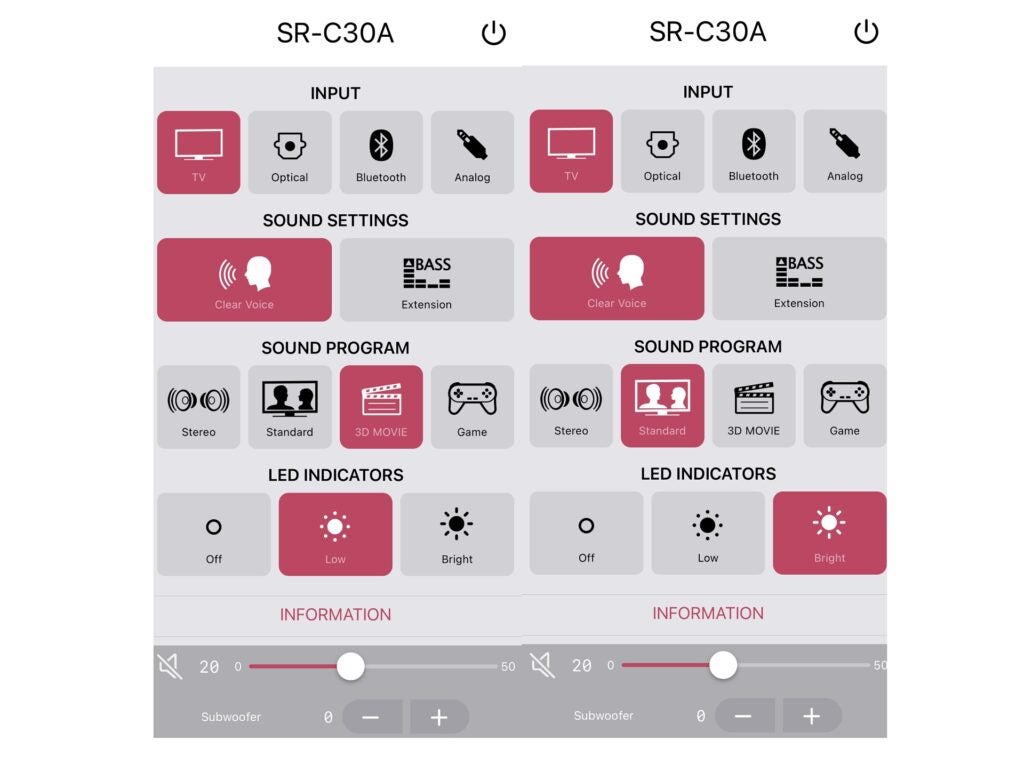
Sound Quality
- Bold, direct and detailed sound
- Good low-end control and drive
- Handover between sub and soundbar is rather too apparent
Yes, the SR-C30A’s subwoofer is small and its soundbar is smaller still – but this system nevertheless sounds bigger, beefier and altogether more convincing than any number of mainstream TVs or gaming monitors I could mention. It may not be perfect (what is?), but it’s a definite upgrade on the audio system fitted to the majority of affordable televisions.
It’s the directness and positivity of the soundbar’s performance that’s initially most striking. It may not have a dedicated tweeter anywhere, but it creates convincing, quite substantial high frequencies regardless – and they are loaded with detail as well as with body.
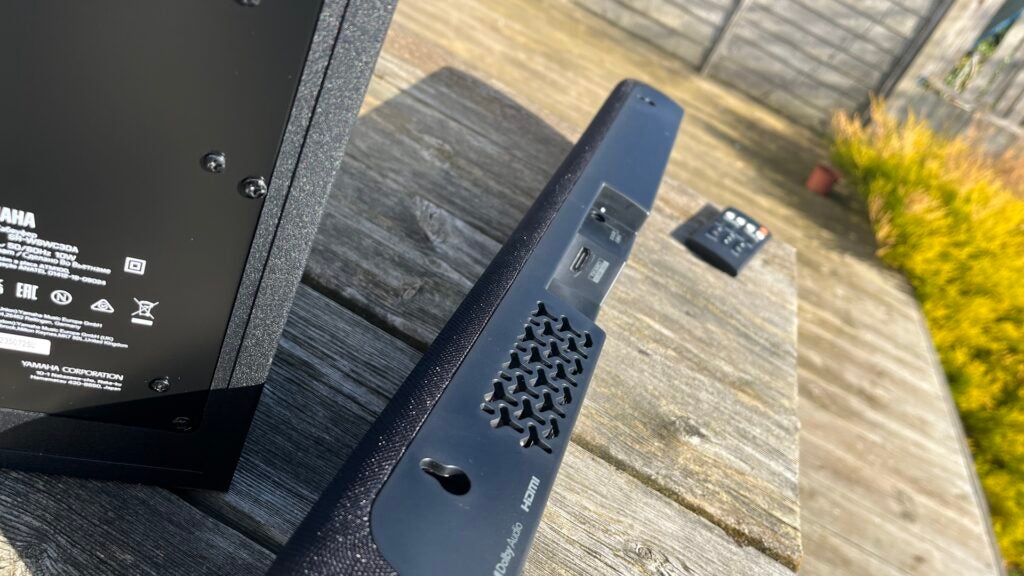
And it’s a similar story where midrange response is concerned: the Yamaha sounds assertive and upfront, but never gets carried away with itself – and, again, detail levels are gratifyingly high. Dialogue is distinct, characterful, loaded with information regarding tone and timbre, and projects well ahead of the other elements of a soundtrack – even if the soundtrack in question is in the process of kicking right off.
At the bottom of the frequency range, too, where the subwoofer does its thing, there’s well-controlled presence and plenty of fine detail available too. The sub proves punchy enough to cope with the full-on action stuff, but controls its output sufficiently well to make the attack and decay of individual events apparent where less capable designs just drone. This helps no end where rhythmic expression is concerned too, when your soundtrack gets music-heavy (or you just decide you want to stream so music).
The soundstage the SR-C30A creates isn’t anything special in terms of outright scale, but it’s well-organised enough to keep everything in its lane and prevent even the most complex moments in a soundtrack getting muddled. And there’s sufficient dynamic headroom available (despite the unpromising power rating) to let the distance between whispered exposition and huge, expensive explosion seem fairly significant.
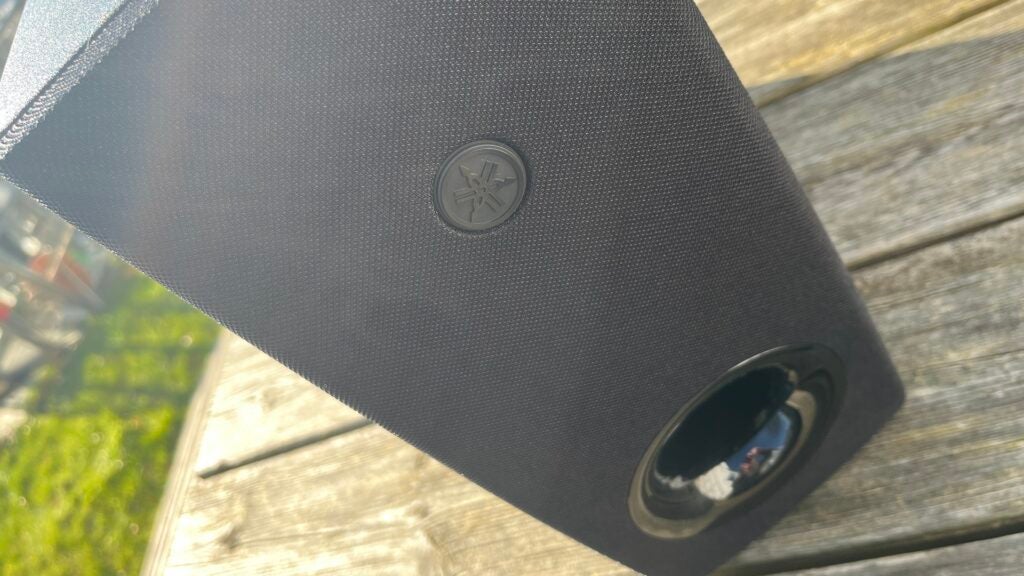
The relationship between the soundbar and the subwoofer isn’t all sweetness and light, though. The subwoofer seems to have been charged with dealing with rather more of the frequency range than is common in products like this – the soundbar by itself is undeniably lightweight and somewhat lacking in presence, so the subwoofer has to take care of more of the frequency range than is perhaps ideal.
So the crossover between the two is high enough up the frequency range to put it in quite a sensitive area as far as human hearing is concerned – and it’s not an especially smooth handover. The difference in tonality between the two devices is made quite apparent. Fiddling with the subwoofer’s volume relative to that of the soundbar helps a little, but it can’t eliminate the problem.
Latest deals
Should you buy it?
You know perfectly well that small is beautiful: You might be able to buy a slightly better-sounding alternative for this money, but it won’t be anything like as discreet.
You expect full-on performance from a scale model of a soundbar: Yes, it sounds much better than your useless television – but the SR-C30A isn’t exactly a wide-screen listen.
Final Thoughts
You’re not short of choice where soundbars at this sort of money are concerned – and, in fact, soundbars-plus-a-subwoofer aren’t all that rare at this price either. But the SR-C30A’s unique selling point is persuasive in the extreme. After all, bigger doesn’t automatically mean better – and if discretion and/or portability are on your wish-list, you can’t really go wrong here.
How we test
We test every soundbar we review thoroughly over an extended period of time. We use industry standard tests to compare features properly. We’ll always tell you what we find. We never, ever, accept money to review a product.
Find out more about how we test in our ethics policy.
Tested for a week
Tested with real world use
FAQs
There’s no immersive audio support for the C30A soundbar. It supports Dolby Digital audio for films and TVs

